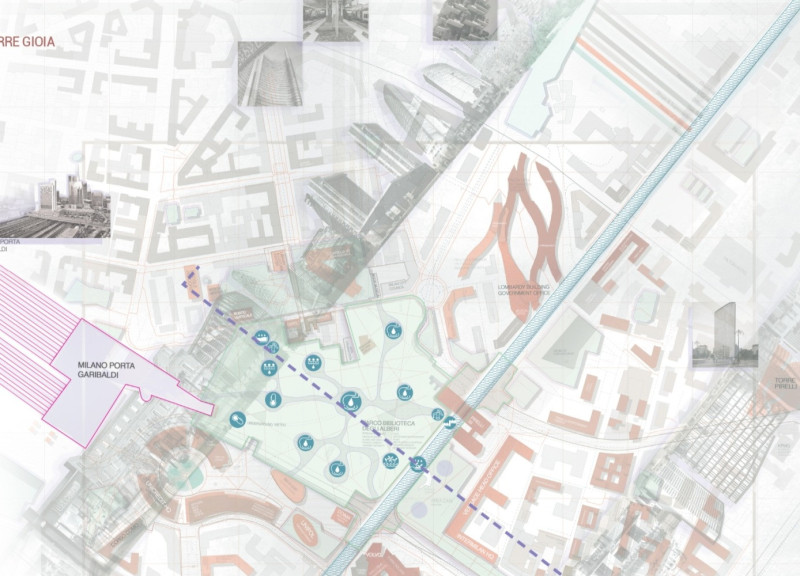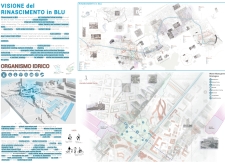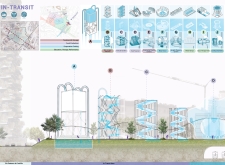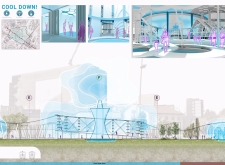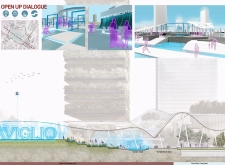5 key facts about this project
The project represents a significant movement towards creating interconnected urban ecologies. It seeks to reconnect residents with their environment, enhancing both ecological awareness and community engagement. By centering on sustainable practices, Rinascimento in Blu redefines the relationship between architecture and its surrounding context.
A primary function of the project is to mitigate the Urban Heat Island Effect (UHIE) prevalent in metropolitan areas. Through extensive use of green infrastructure, the design incorporates elements that promote thermal regulation, air quality improvement, and biodiversity enhancement. Key features include water management systems, community-focused spaces, and mixed-use developments that prioritize accessibility and user engagement.
Unique Design Approaches
One aspect that distinguishes Rinascimento in Blu is its innovative use of water as a central design element. This project incorporates various water management strategies such as rainwater harvesting systems and wetland parks that not only manage stormwater but also create recreational spaces. The use of permeable materials in paving and landscaping enhances water infiltration, reducing runoff and lowering flood risks in urban settings.
Architectural designs feature sustainability-focused materials including reinforced concrete, glass, steel, and green roof systems. The selection of these materials supports the long-term durability of the structures while contributing to the project's environmental goals. The design integrates vegetative walls and urban cool systems that not only contribute to cooling but also foster biodiversity and habitat creation.
Community engagement is another focal point of the project. Public spaces, treatment facilities, and community gardens are organized to foster interaction, education, and well-being. These spaces serve multiple functions, enhancing the urban fabric while providing areas for leisure, social interaction, and community activities.
Holistic Integration of Nature and Urban Elements
Rinascimento in Blu adopts a holistic approach to architectural design by merging built environments with natural systems. This includes the use of evapotranspiration structures that facilitate cooling through vegetation. An emphasis on green spaces and natural habitats aims to improve local biodiversity while providing the community with accessible nature within the urban landscape.
By promoting mixed-use functionalities, the project supports a diverse range of activities, contributing to a vibrant urban life. The integration of educational facilities within the infrastructure encourages a dialogue on climate and environmental issues, reinforcing the project's commitment to sustainability.
For more detailed insights into the architectural plans, sections, and overall design ideas of Rinascimento in Blu, readers are encouraged to explore the project's presentation. Examining various architectural components will provide a comprehensive understanding of how this project not only addresses immediate urban challenges but also envisions a sustainable future.


